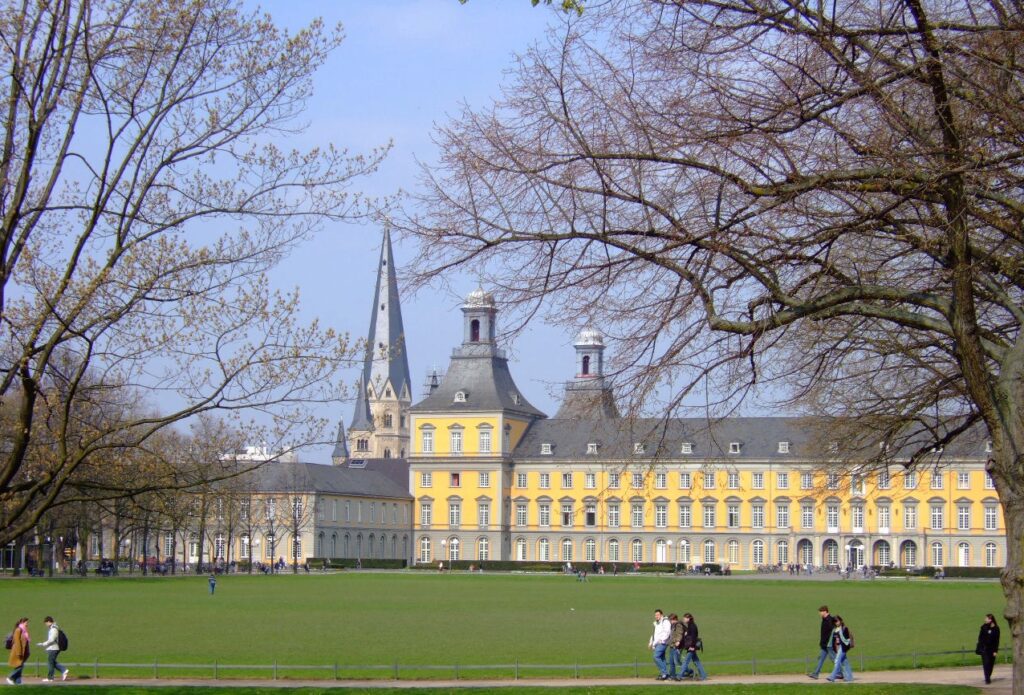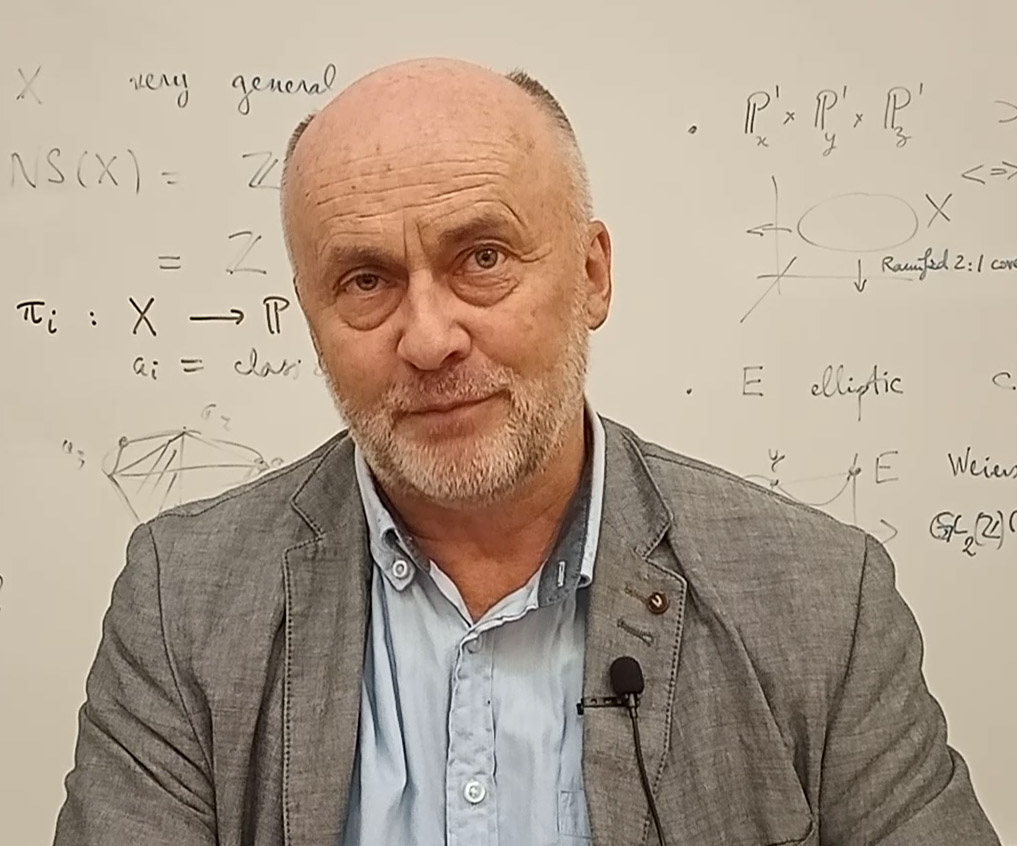SMRI communications coordinator Larissa Fedunik-Hofman had the privilege of attending the Panorama of Mathematics II (October 4–6 2023) in the German city of Bonn, where she met with conference organiser Professor Dr. Karl-Theodor Sturm to discuss the opportunities and challenges presented by Panorama.
The Panorama covers new trends, results, and challenges in the mathematical sciences, and its first chapter took place in 2015 to celebrate the first decade of the Hausdorff Center for Mathematics (HCM). “The idea was to give a panorama of what goes on in the world of mathematics,” says Sturm, who has been a member of the organising committees of both Panorama I and II.
The HCM is a unique research centre based at the Rhenish Friedrich Wilhelm University of Bonn. Clusters of excellence in Germany tend to be focused on a single research topic, such as dark matter or cancer treatment. In contrast, the HCM has six institutes (departmental subdivisions) under its broad umbrella: Pure Mathematics, Applied Mathematics, Numerical Simulation, Discrete Mathematics, Economics and the renowned Max Planck Institute for Mathematics. The latter is external to the University of Bonn, but its researchers work together in close collaboration.

The huge research scope of the HCM brings unique opportunities and challenges. “It requires that we interact with each other, which is quite some challenge in mathematics. Not even our colleague next door might understand what it is that we do!” says Sturm. Panorama aims to present a research snapshot to a broad mathematical audience, particularly students and postdoctoral researchers. Rather than inviting the most decorated or famous mathematicians as speakers, the conference organisers focused on those whose work will shape the research directions of early-career mathematical scientists in the coming decades.
Panorama II began with a flurry of anticipation for the opening seminar by Fields Medallist Martin Hairer. SMRI Director Geordie Williamson was also a keynote speaker; one of three Australian mathematicians, along with Fields Medallist Akshay Venkatesh (The Institute for Advanced Study) and Clay Research awardee Tristan Buckmaster (New York University). Panorama II was small in size, featuring fewer than 20 speakers, but the program was nonetheless comprehensive. Topics ranged from representation theory in pure mathematics to game theory in economics and ‘digital twins’ in applied computer science.
Needless to say, the biggest organisational challenge was the pandemic, which resulted in two postponements of Panorama II. “This time it is a bit smaller, but it’s still a fascinating conference,” says Sturm. He estimates that there were about 280 attendees, more than half of whom were early-career researchers.
Thanks to travel grants from the HCM, three science journalists were also in attendance, including the author. The two other journalists represented Quanta Magazine, the online publication launched by the Simons Foundation, and science magazine Spectrum der Wissenschaft (the German equivalent of Scientific American). Interviews with several keynote speakers were recorded by Stefan Hartmann, the HCM’s scientific coordinator and PR manager, and can be viewed on the HCM YouTube playlist.
“I think we have offered people something very stimulating,” says Sturm. He describes Venkatesh’s seminar as just one example. “Venkatesh does outstanding mathematics, very complicated stuff, quite far away from my own research. His talk was a very interesting introduction to his field, and this is really what we want to do [through the conference]. The most important effect is for the younger generation, postdocs, students…we have had a lot of positive feedback from them.”
A mathematical hub in Bonn

Sturm has been a Professor at the University of Bonn for 25 years and held the role of HCM chairman from 2012–2019. Originally trained in probability theory and stochastic processes, his research moved towards analysis and geometry as his career progressed. “In some respects, I’m nowadays more known for geometric analysis,” he explains.
One of his key contributions to the field of optimal transport metric geometry concerns syntactic Ricci bounds. “I developed this concept of curvature dimension condition some 15 years ago in cooperation with John Lott and Cedric Villani,” says Sturm. “This was a very fruitful definition and now hundreds of young people have gone on to work in this direction.”
As well as promoting research excellence, a key strategic goal of the HCM is to establish a mathematical hub in Bonn, comparable to American institutions like MIT, Stanford University and UC Berkeley. “For me, it’s very important that we are able to keep our biggest talents here in Europe, in Germany, and, if possible, in Bonn,” says Sturm. “The scientific environment is extremely attractive here. We have a lot of postdoctoral researchers and about 100 mathematics PhD students, which is fantastic. More than half of our PhD and Masters students come from outside Germany. This brings a lot of interesting new ideas and talents to Bonn.”
Lessons from Panorama
After Panorama I, Sturm and the other organisers were impressed by the quality of the talks, as well as the positive feedback from both the speakers and the attendees. “What was surprising to me was that the speakers really enjoyed the atmosphere, because we have specialists in everything from topology to numerics, which in principle do not have that much in common,” says Sturm. “Of course, it’s also kind of a festival for us [at the HCM] to have our excellent colleagues visit us.”
As for Panorama III, Sturm will hand over the organisational duties to his colleagues, but he is looking forward to another scintillating conference, whether in six to eight years from now. “We will be looking for folks who can give some impetus for what’s going on at the mathematical forefront or what could be motivating young people over the next decade.”